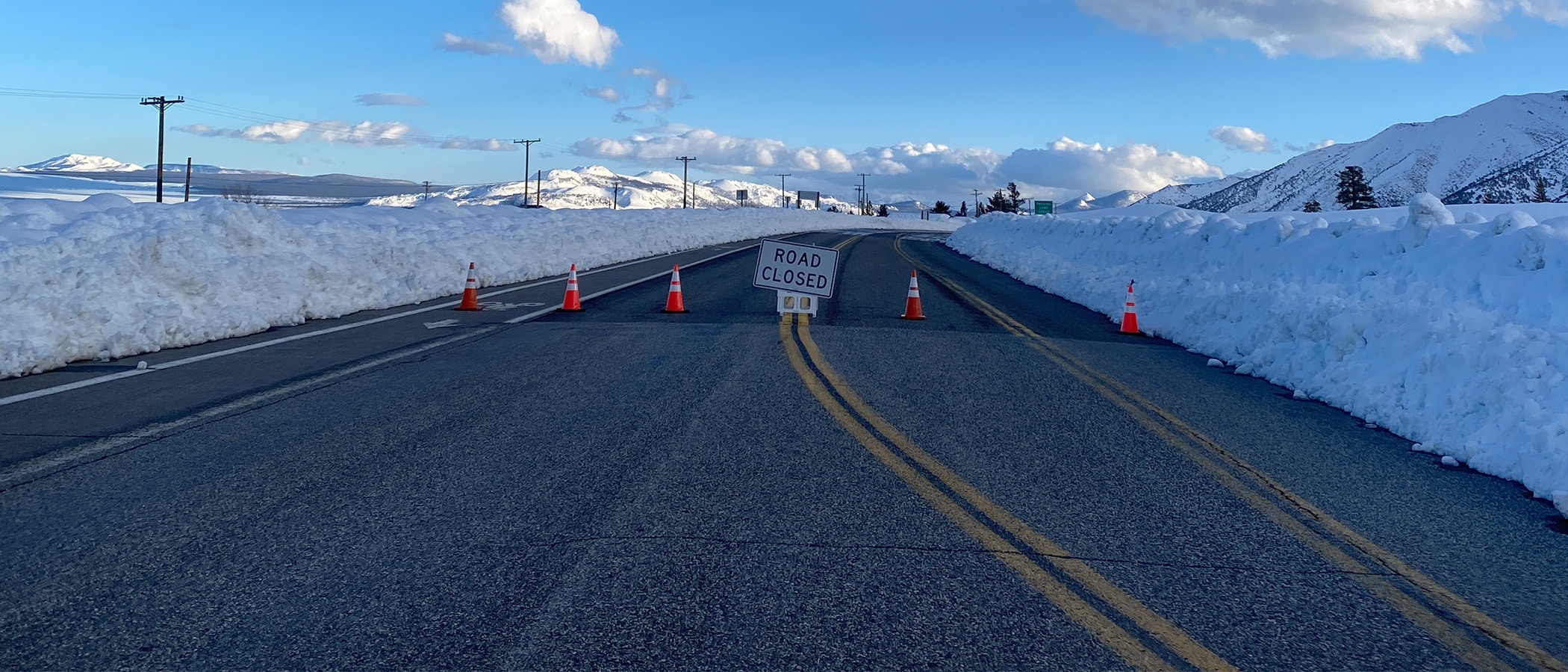
Note: For up-to-date highway information see the travel resources at the bottom of this post.
395 reopens with escorts from Lee Vining to State Route 167
March 23, 2023: Caltrans will be escorting travelers on U.S. Highway 395 between the town of Lee Vining and the junction with State Route 167 beginning March 24. No additional escorts will be offered as crews will be continuing to work to fully reopen the road.
Escort schedule:
- 7:00am to 8:30am
- 3:30pm to 5:00pm
Usually, at this time of year, traffic flow along Highway 395 along the west shore of Mono Lake is fairly quiet.
This year, the highway is closed and there’s no traffic at all north of Lee Vining—but it’s anything but quiet along the shore of Mono Lake.
Avalanches first closed Highway 395 along Mono Lake on February 26, covering the highway and running nearly to the lake’s edge. On February 28 more avalanches came down, taking out the power to Mono City and Bridgeport. And with continuing blizzards, more snowstorms, and atmospheric rivers bringing rain, the situation got worse from there.
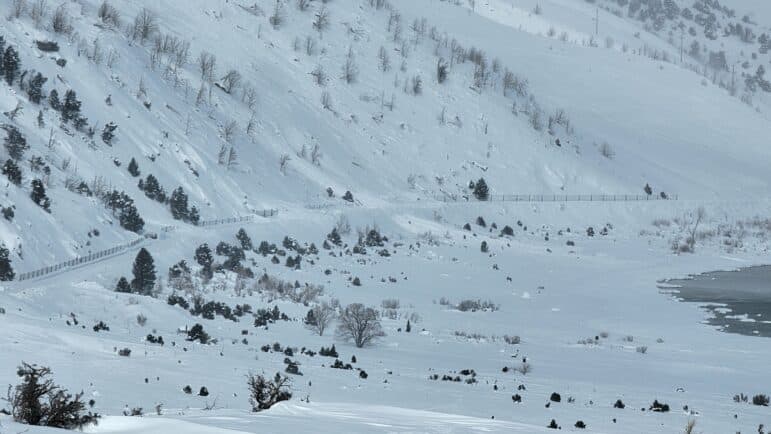
On March 3 the National Guard worked with the Mono County Sheriff’s Office and the California Office of Emergency Services to land a helicopter on the closed highway to deliver generators, fuel, water, and MREs to the folks in Mono City, who had been stranded by road closures on all sides for five days and without power for four days by then.
On March 7 crews were launching dynamite at the avalanche slopes from helicopters in hopes of settling the snow enough to be able to get the equipment staged on both sides of the avalanche zone in to clear the massive avalanches. On March 10 an atmospheric river came through, creating the potential for additional avalanches and debris slides. Today another atmospheric river is bringing more slushy snow and rain to the Mono Basin (and much of the state!).
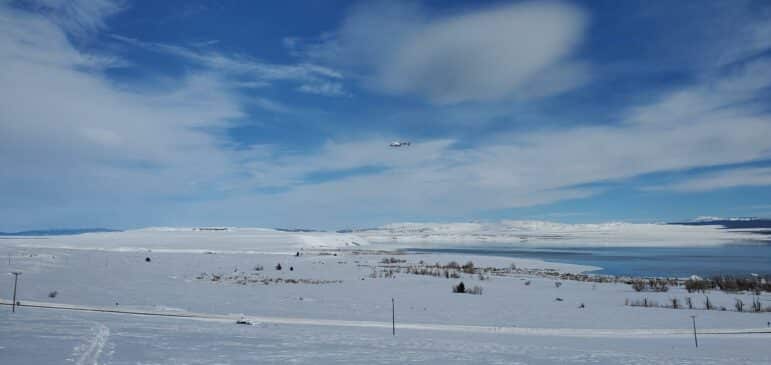
Sections of the area are known to avalanche and have a sophisticated avalanche control system in place high above the highway. But this is, by all accounts, an exceptional snow situation, and the most destructive slides crossed the highway north of the established avalanche chutes, tearing out rockfall netting, concrete barriers, and guardrail at the road, plus power poles and lines above the road. To tackle the resulting debris pile Caltrans has issued an emergency contract and mobilized heavy equipment from across the state to excavate the highway.
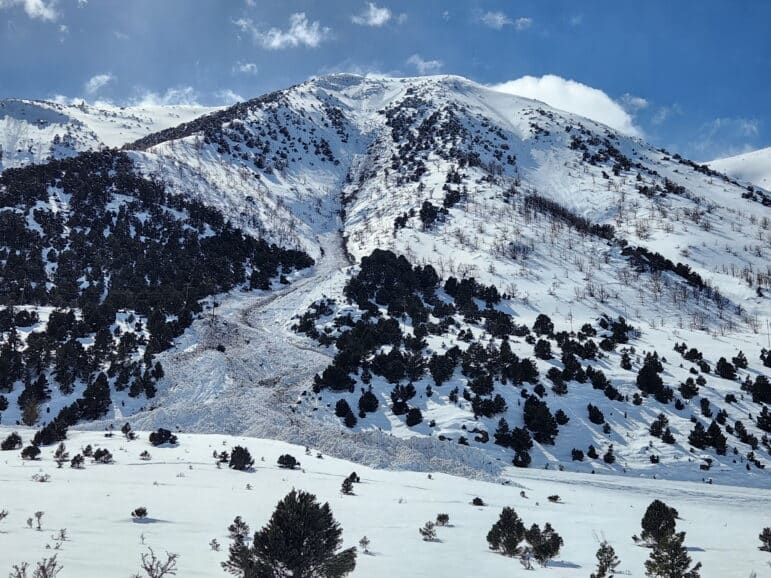
Caltrans, the California Highway Patrol, the Mono County Sheriff’s Office, CAL FIRE, and Southern California Edison have met this extreme snow situation with equal effort. Those stranded in Lee Vining and Mono City have had front row seats to see major avalanche safety and snow removal activity on both sides of the highway closure, and have a vested interest in supporting the crews in this critical work.
This amount of snow accumulation is exceptional, and slides like these have not been seen in decades. Crews have had to clear new avalanches to simply access and begin work on the February 26 avalanches, and at this time there is no estimated reopening date for the highway.
This recent helicopter footage shows the avalanches across the highway; white-colored avalanches came down in late February and the two gray-colored avalanches were released deliberately on March 12 by the Gazex system.
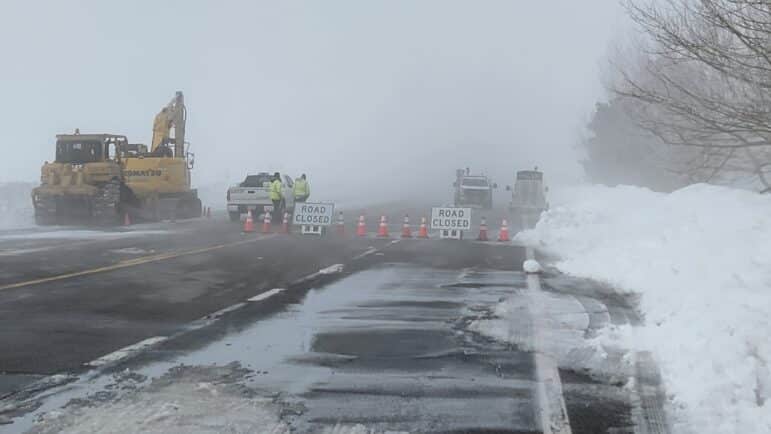
Aside from the highway closure, there is no access to any visitor sites at Mono Lake by car at this time due to the incredible amount of snow here.
The highway closure has created hardships for everyone involved. It has cut people off from being able to work and attend school in person, separated families, and disrupted a critical shipping route. The Lee Vining-Mono City community has been resourceful in getting mail, packages, prescriptions, groceries, and other necessities shuttled between the two locations, but that now involves a five-hour drive through Nevada. We all hope the avalanches can be cleared as swiftly and safely as possible.
Today’s official update from Caltrans
MONO LAKE AVALANCHE CLOSURE UPDATE: On March 7, Caltrans initiated an avalanche control operation on the hillside along U.S. 395 between Lee Vining and State Route 167. Using a helicopter, Caltrans dropped approximately 20 small explosives attempting to trigger an avalanche.
The snowpack proved to be too firm, and no avalanches were recorded as part of the operation. With the hillside deemed safe, emergency work began on March 8 to begin clearing the avalanches from U.S. 395.
Beginning Thursday, March 9, a warmer atmospheric river moved into the region, bringing with it rain and higher snow levels. Emergency work had stopped before the storm arrived, and on March 12, Caltrans initiated another avalanche control operation using its Gazex system.
This operation did trigger an avalanche that brought a significant amount of heavy and wet snow down onto U.S. 395 south of previous avalanches but within the current closure. With more storms in the forecast, Caltrans will perform additional avalanche mitigation operations this week before the emergency work can resume. Once work has restarted, it will be at minimum two weeks before the highway can reopen in a limited capacity.
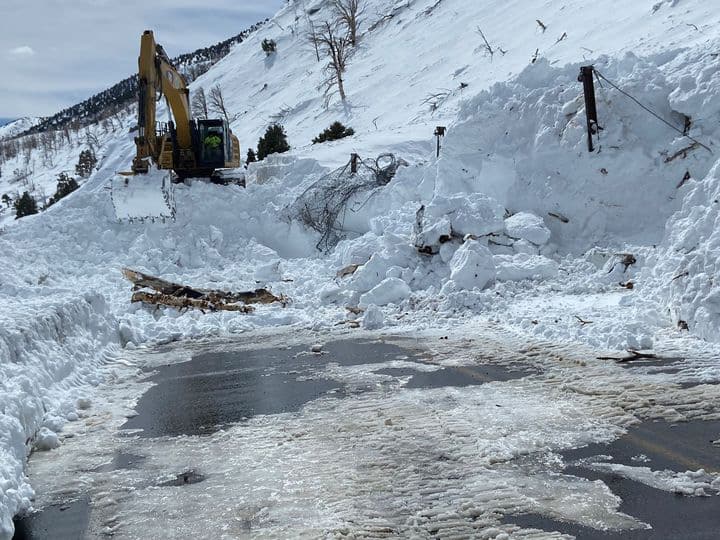
Travel resources
- Caltrans District 9: Facebook • Twitter • Quickmap • check specific highways
- National Weather Service, Reno: Facebook • Twitter
- Mono County Sheriff’s Office: Facebook • Twitter
- Mono County weather & road conditions
- Ready Mono emergency portal
Top photo by Elin Ljung.
